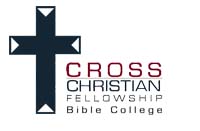Great marketing has the power to move us and to change our routines. Starbucks Coffee did this by marketing a new way of life thereby changing millions of American’s morning routine. Starbucks made coffee drinking and going to coffee shops a lifestyle.
At the heart of it, marketing, especially church marketing, is about changing habits and replacing them with new ones. And that is very spiritual. Often church leaders shy away from marketing, thinking that it is less spiritual. Often it is believed church events and activities should simply be announced. Sometimes marketing is even perceived as manipulative. But really marketing is about influencing the use of resources and personal habits and that is leadership.
So how do we effectively market small groups in a church? First, it starts with an understanding that it is not so much about the individual small groups, the current group season, it is about the long view about becoming a culture. Companies like Apple and Starbucks have a well understood culture and while they take risks, their risks fit who they are and their overall brand message. Yes, we aren’t companies, but we have an even higher responsibility to keep the message clear and influence our church and community to take steps to grow in faith. But that won’t happen if the message is unclear, if the immediate is the only focus, and if there is no longview for outcomes. The first step in effectively marketing small groups is to know why you do them and what exactly you hope they accomplish. This seems intuitive but churches have a variety of answers to those questions and if why and what aren’t clearly defined marketing the message of how, small groups will never be clear.
Once you are clear about that, there are some tips which will help you in your effort to market small groups.
- Take Advantage of Natural Season. In every culture there are natural seasons in which lend themselves to beginnings. The contexts in which I currently minister much of life revolves around school calendars. That means the fall is a prime time where families are thinking about commitments, calendars and the coming school year. This is often when they are making their decisions about how they hope to spend their time over the next several months. What they can invest time in and what they won’t be able to. This is a time that must be leveraged for small groups. Otherwise, time has often already been allowed to other areas and families simply don’t have the margin to join groups, no matter how great of an idea it might seem.
- Potential Seasons to Leverage
- Fall – Beginning of School
- New Year – New Resolutions and New Beginnings
- Easter – Thinking about Spiritual Matters Again
- Seasons of Transition
- When People Newly Connect with Your Church
- When Individuals and Families Take Steps of Further Connecting
- Share Stories. People want to be part of something. There are far too many things that simply occupy our time. But just as Starbucks created a coffee shop culture where many Americans began to see themselves as coffee shop people, stories of small group life help individuals begin to see themselves as part of one. Sharing Stories helps people see themselves in other’s stories.
- Normalize It. Make Small Groups part of the language of your church. Encourage small group leaders and members to talk about their groups and group life. You want people not in groups to feel like they’re missing out, like it is odd to be here and not be in a group.
- Preach It! Obviously, going back to the previous point, it can’t be truly normalized without being preached on Sundays. It helps to have the senior pastor share stories from their small group experiences.
- Consistently Communicate the Message. While leveraging seasons is super important, consistency in your messaging is also vitally important. Small Groups shouldn’t just be talked about a few times a year. The message of groups should be layered in at different levels throughout the year.
The key is understanding your message and keeping that message in front of your church. Capitalize on seasons with the message of groups using stories to connect. With consistency over time you can create a culture of community in your church.








 Jeff Maness
Jeff Maness